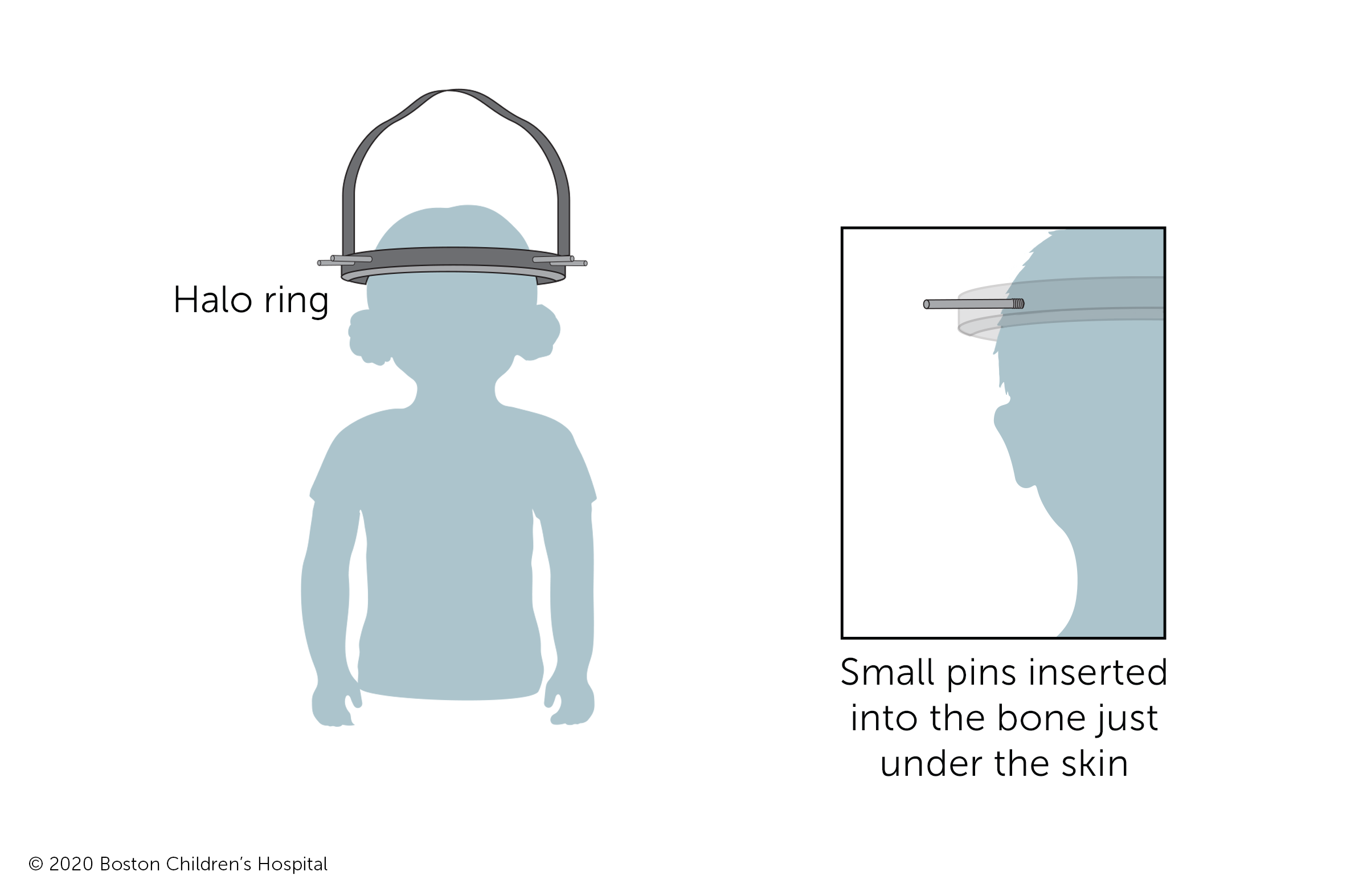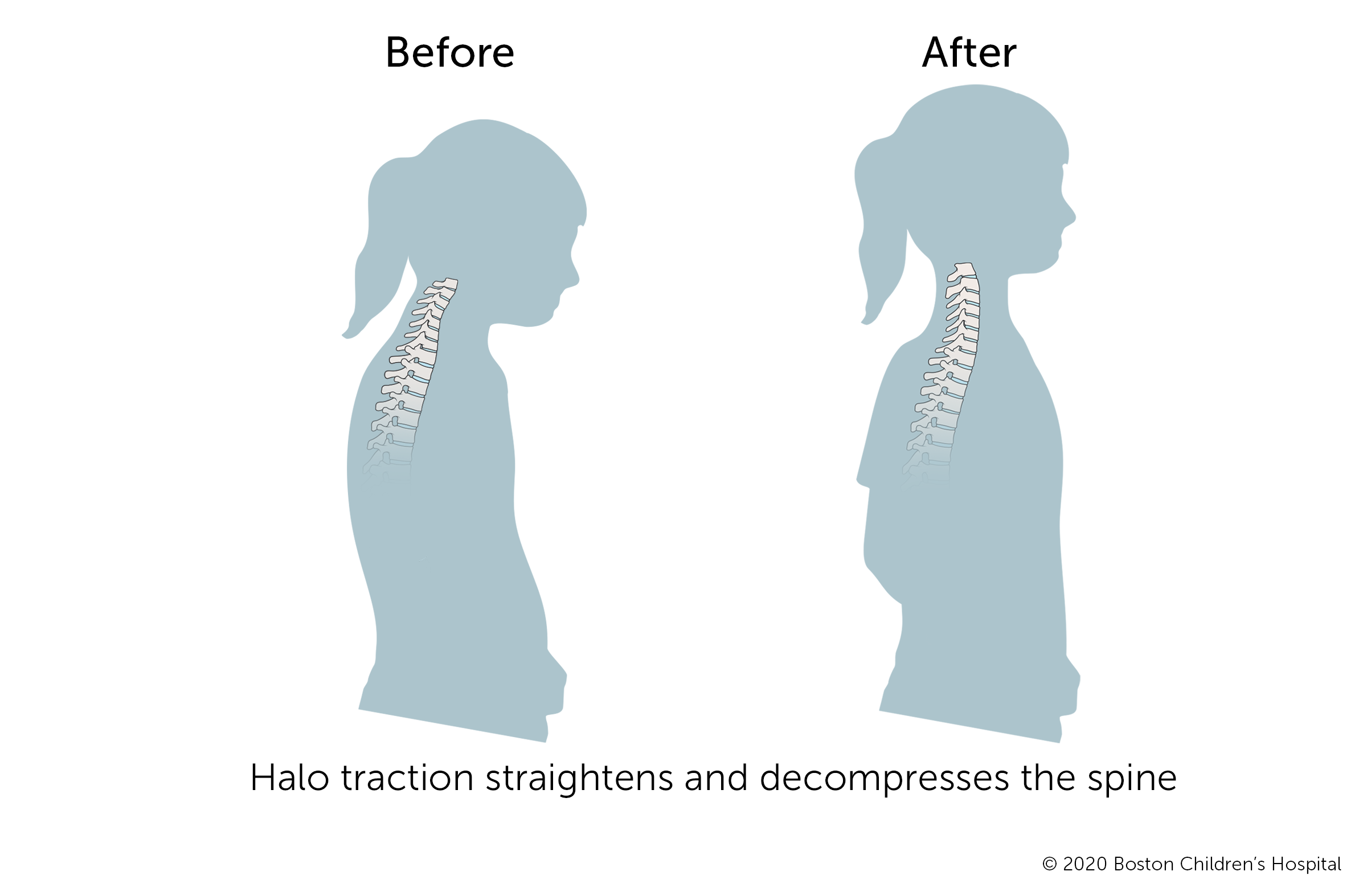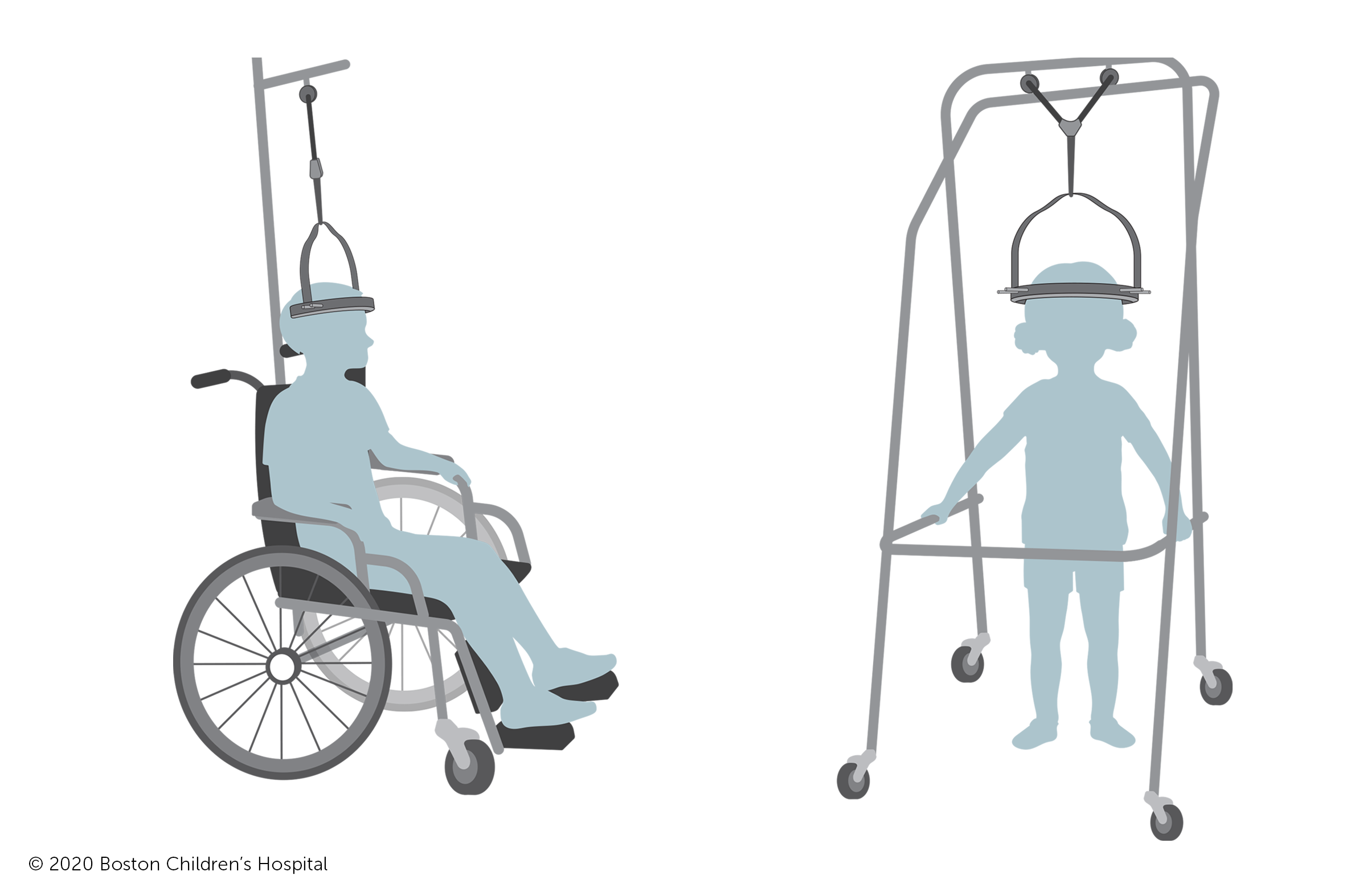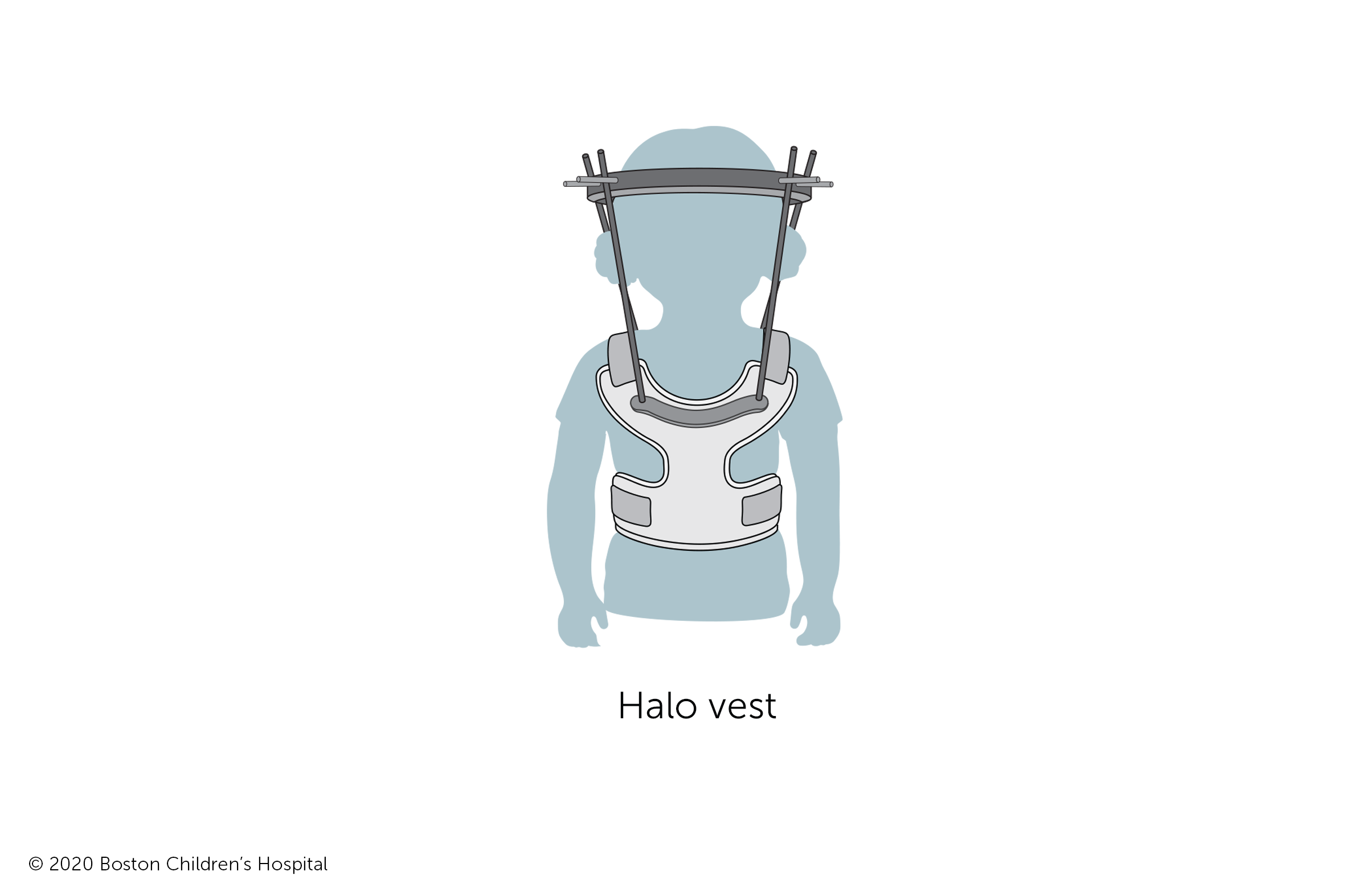What is the purpose of halo-gravity traction?
In children with severe spinal compression or curvature, halo traction reduces the risk of damaging the nerves or soft tissues that surround and support the spine during surgery. While it is not a replacement for surgery, halo traction can help surgeons correct spine problems through less invasive surgery.
Spine conditions that may require halo traction include:

How does halo-gravity traction work?
A surgeon attaches a lightweight metal ring (halo) to the child’s skull with small pins. The number of pins depend on the child’s size; more pins are used for larger children. The pins go into the bone of the forehead to keep the child’s head from moving. Children are given general anesthesia and are not awake for this procedure.
Once the halo is in place, a clinician attaches it to a pulley system. The pulley system is on your child’s bed, wheelchair, and walker. Over the next several weeks, clinicians will carefully add weight to the pulley to slowly straighten the child’s curved or compressed spine. Doctors use the child’s weight to decide how much weight to add. They also monitor the child’s movements and strength throughout the process and take periodic X-rays to track your child’s progress. In some cases, doctors may temporarily decrease the amount of weight to give the child’s body time to adjust. Once the spine has reached its best possible position, the child will have spinal fusion surgery to permanently stabilize their spine.

Does halo-gravity traction hurt?
Some children have a headache or pain around the pin sites for a day or two after the halo is attached. However, most kids adapt quickly to being in traction. By stretching and lengthening the neck, halo traction often relieves symptoms caused by a spinal deformity. Many children say they feel more comfortable than they did before the procedure. They may have an easier time breathing, increased appetite, or be able to stand more upright.
How long does a child remain in halo-gravity traction?
The amount of time a child will spend in halo traction depends on how severely their spine is curved or compressed. Typically, the procedure lasts between three and eight weeks.
Where is halo-gravity traction performed?
Children stay in the hospital the entire time they’re in halo traction so doctors can monitor their progress and adjust the weight as needed. Other members of the in-hospital care team include:
- Nurses, who provide hands-on care, make sure the pins remain clean, and provide ongoing updates and education for the family
- Occupational therapists, who help the child adapt to basic activities like bathing, sleeping, and using a halo wheelchair or walker to move around the hospital
- Physical therapists, who help get the child up and moving, as well as help them build strength and flexibility
- Child Life specialists, who can provide emotional support and activities to help make the hospital stay more pleasant
A parent or guardian should plan to stay overnight with the child to help them feel comfortable in the unfamiliar setting. Decorating the child’s room, bringing in favorite toys and stuffed animals, and playing games with the child can also help make their stay as pleasant as possible.
Can my child come out of traction?
Children can come out of traction for a short time. They can come out of traction for showers, repositioning, using the toilet, changing clothes, and for daily medical care such as respiratory treatments.
How active can children be during halo-gravity traction?
Children are encouraged to be out of bed as much as possible. Most children find it easy to move around using a traction walker or wheelchair once they adjust to being in traction. Standing, walking, and low-impact play can enhance the positive effects of traction.

How do children sleep during halo-gravity traction?
The child will have a special bed while they’re in traction, though it may take some time to adjust to sleeping in the halo. A rolled-up towel or small pillow can support the child’s head and make it easier to sleep.
Can a child bathe during halo-gravity traction?
Children can take showers or sponge baths while in traction. It’s important to only use baby shampoo as other soaps may contain chemicals that could react with the metal halo.
What happens when a child leaves the hospital after halo-gravity traction?
After halo traction and spinal fusion surgery, the child will need to avoid high-impact activities for several months while their spine heals and their muscles get stronger. They may need to wear a halo vest or orthopedic vest for a period of time after leaving the hospital.

- A halo vest is a brace that holds the child’s head completely still after surgery. The brace goes around the torso and is lined with sheepskin to protect the child’s skin. Rods that attach the brace to the halo hold the head in place.
- As their neck gets stronger, the halo vest is removed and likely will be replaced with a brace. The vest supports the child’s neck but allows small head movements.
The child’s spine surgeon will closely monitor the child’s recovery to decide when the child no longer needs to wear a brace.
Will the halo leave scars?
The pins will leave small lesions in the skin when they are first removed. These typically scab over in a day or two. The child will have small scars on their forehead but these generally fade and become less noticeable over time.